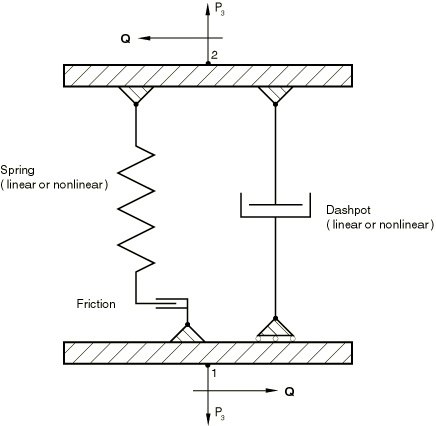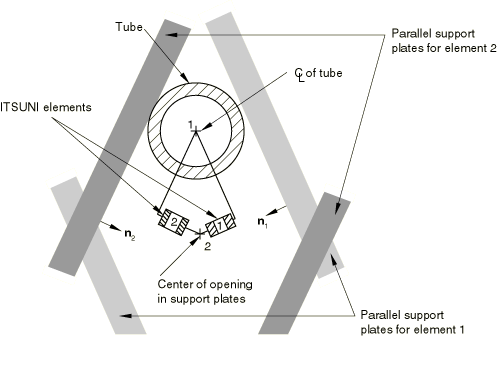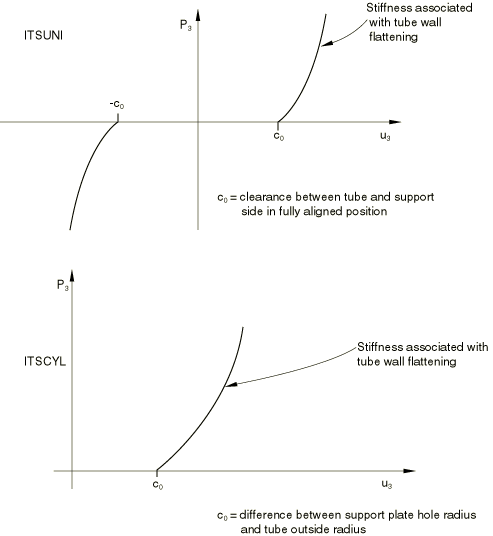Tube support elements | ||||||||||
|
| |||||||||
ProductsAbaqus/Standard
Typical Applications
![]()
Choosing an appropriate element
Two types of tube support elements are provided.
ITSUNI elements
ITSUNI is a “unidirectional” element, which always acts in a fixed direction in space. One node of the element must be located on the axis of the tube, which is modeled using beam elements; and the other node must be located equidistant between the two parallel support plates. The support plates are built into the ITSUNI element definition.

ITSCYL elements
ITSCYL is a “cylindrical” element, which can be used to simulate the interaction between a circular tube and a circular hole. One node of the element must be located on the axis of the tube, which is modeled using beam elements, and the other node must be located at the center of the hole in the circular tube support plate. The circular hole is built into the ITSCYL element definition.


![]()
Defining the behavior of ITS elements
You define the diameter of the tube and other geometric quantities that define the ITS element. You must associate these quantities with a set of ITS elements. In addition, you must define the behavior of the spring, friction link, and dashpot that make up a tube support element.
The spring behavior of an ITS element is shown in Figure 4. Relative displacements in the element are measured from the position where the tube and the hole in the support plate are aligned exactly—when the nodes of the element are at the same location. As indicated in Figure 4, the spring behavior of an ITS element is modified from that of the assigned spring definition to account for any clearance between the tube and support when the nodes of the element are at the same location. When there is no contact between the tube and the support, no force is transmitted by the spring; when the tube is in contact with the support, the force increases as the tube wall is deformed. This force can be modeled as a linear or a nonlinear function of the relative displacement between the axis of the tube and the center of the hole in the support.
Friction between the tube and support will generate a moment at the tube node if the tube diameter is greater than zero and a moment at the hole node if the hole size is greater than zero. At least one of the following should be true for any node of an ITS element that will have a moment acting on it:
the node should be associated with a beam or other element that can carry a moment;
the nodal rotation should be set to zero with a boundary condition.
Input File Usage
Use the following options to define the behavior of ITS elements:
ITS, ELSET=name DASHPOT SPRING FRICTION
